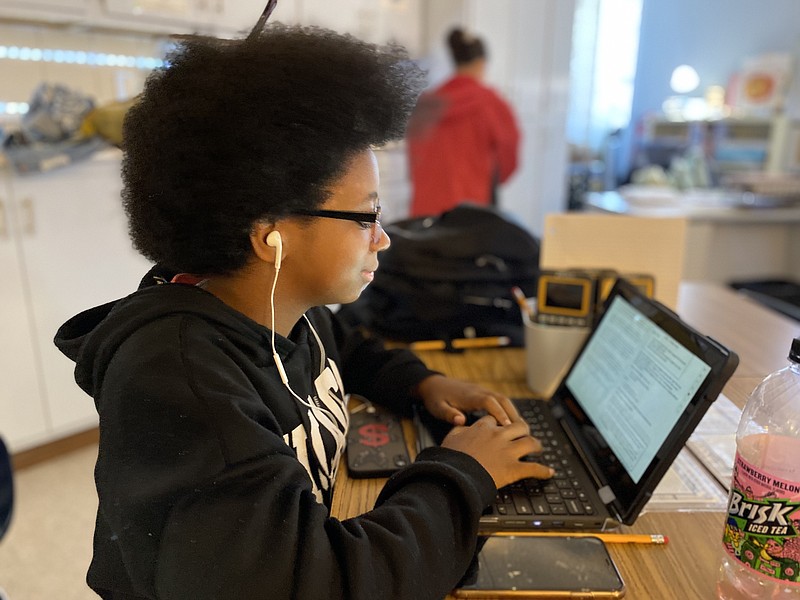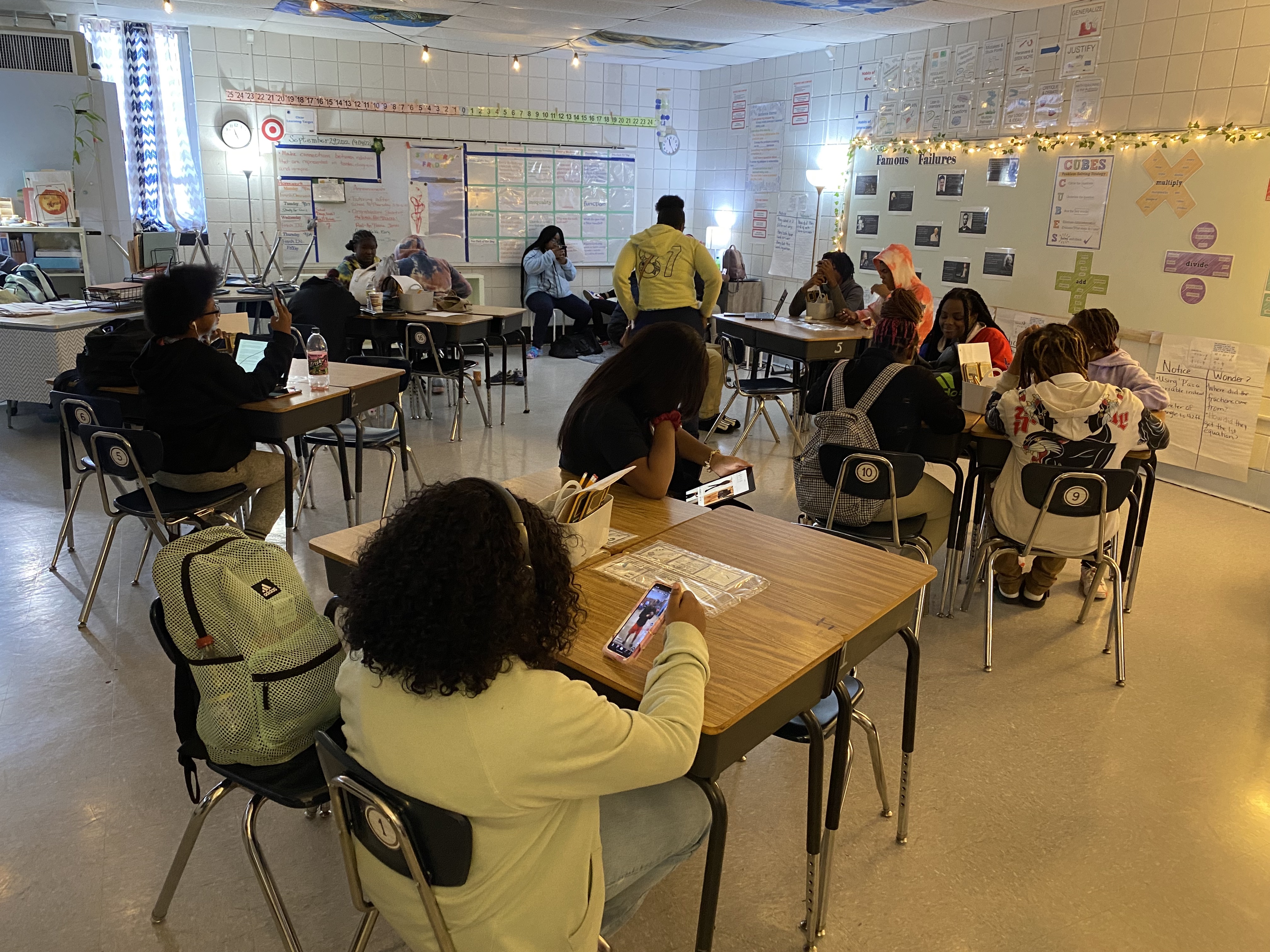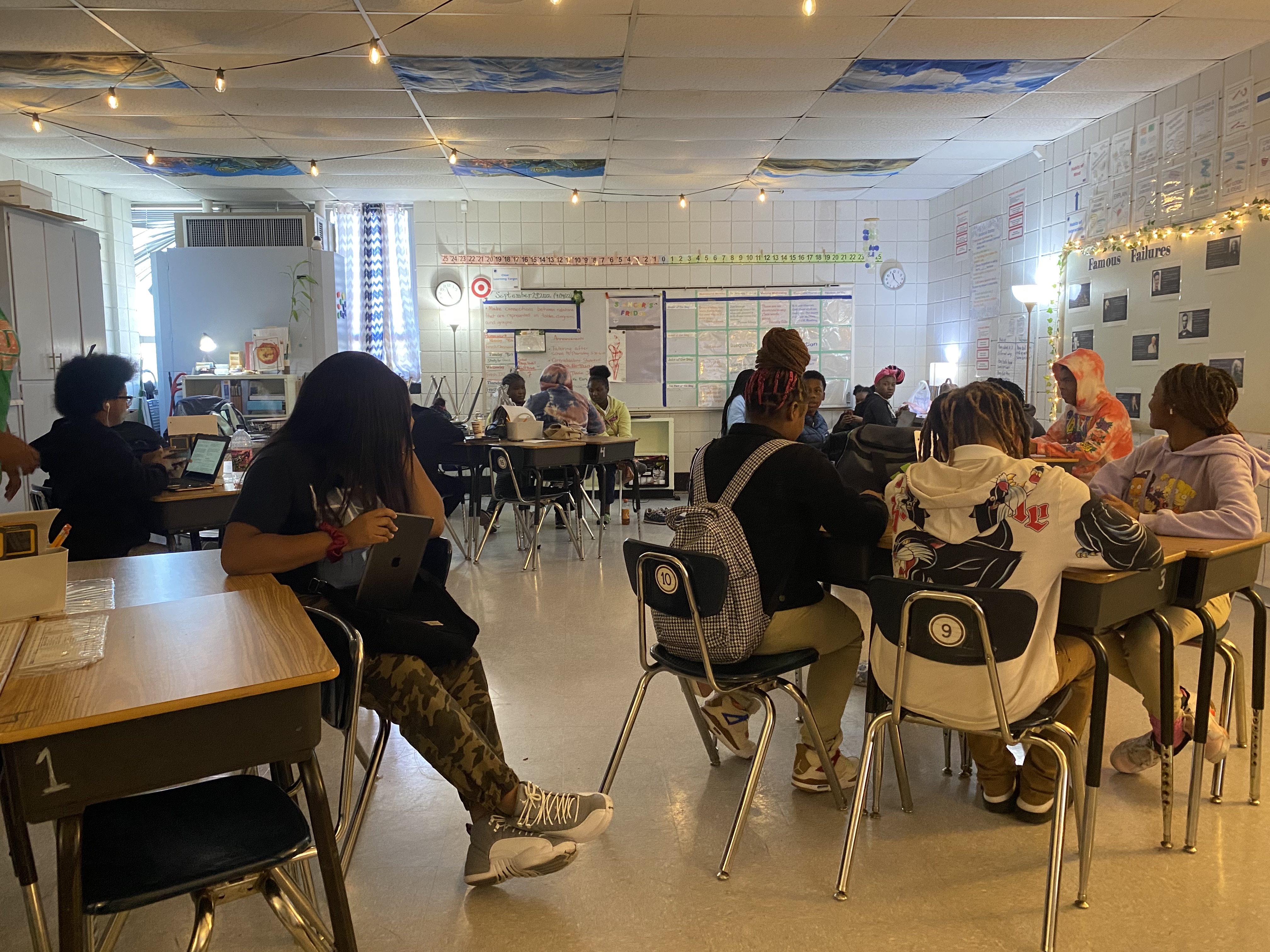Brainerd High School Principal Crystal Sorrells said she can't remember the last time her school wasn't on the state's priority list.
"My earliest memory of the priority list was when I came back in 2009 at Brainerd as an assistant principal," Sorrells said in an interview.
According to data available on the state's website, Brainerd High has been on the list since at least 2017, meaning for the past four years, it was among the lowest-performing schools, the lowest 5%, in the state.
But that's no longer the case.
This year, Brainerd High made it off the priority list, a monumental achievement, Sorrells said. And the reason, she said, has little to do with getting tougher about academic performance. Instead, the past year, under her leadership, has been an all-hands-on-deck effort to serve the unique needs of the students -- 95% of whom are Black or Hispanic.
What is a priority school?
The state uses a series of calculations to determine which schools are in the bottom 5%. Those schools get additional funding -- around $18 million distributed among them.
"When I think of state accountability as a whole they have an entire protocol that is running," Chief Strategy Officer Shannon Moody said in a phone call. "When the protocol was created, they took a lot of community feedback around what are the metrics that are important to the community, and how do we run them in a way that really helps us meaningfully designate the performance of districts? And so they landed on the protocol that exists for districts, and it's looking across multiple measures."
Schools serving grades K-8 are evaluated on four indicators: achievement on the Tennessee Comprehensive Assessment Program assessments, TCAP assessment growth over time, rates at which students are chronically out of school and performance on the English Language Proficiency Assessment.
In addition to those four indicators, high schools are also evaluated on graduation rate and ready graduate rate, or the rate at which students graduate while also having achieved milestones associated with college and career readiness.
Schools are given a score between one and four on each indicator, four being the highest. Typically, three years of data are accounted for in the state's calculation. However, due to the pandemic, data from the 2019-20 school year is incomplete. This year's calculations are based on the 2018-19 and 2021-22 school years.
Since 2018, Brainerd has scored a one on academic achievement and has shown zero growth compared to other schools. However, the school did decrease its chronic absenteeism rate -- the percent of students missing 10% or more of the days they are enrolled -- from 69% in the 2020-21 school year to 60% in 2021-22.
Brainerd also improved its ready graduate indicator score, up from one to two. Its graduation rate was roughly 76% in 2021 though only 20% of students were deemed "graduate ready," according to the state.
Culture of care
"Nothing about the priority list, about the data from end-of-year testing, was really a focus," Sorrells said. "The focus was: get our kids to a place where they know that they are loved; they can be in the building safely and comfortably and be educated; that there's a system in place to maintain that order and structure; and that we can be about the business of school. So, that's what we did."
Sorrells began her role as principal at Brainerd High in July 2021 and immediately went to work. She said her first priority was ironing out administrative procedures like grading practices, monitoring chronic absenteeism and ensuring staff wasn't providing overlapping services.
"There were some mind-blowing situations that occurred where students had missed graduation requirements, not because they didn't have enough credits, but they didn't have the right credits," Sorrells said. "So, when you're thinking about a school on a priority list, every single graduate counts. As educators, every single graduate counts. So there shouldn't be anything that will stop a student from graduating, especially not a clerical error."
Classroom assignments and locations were restructured and carefully thought out, she said.
"There was a very systematic way of why we aligned classes where we did, where supports were going to be available for teachers and for students," Sorrells said. "And, so, getting those types of logistical things out of the way before kids hit the building started this process."
Once school began, the next step was creating a "culture of care," Sorrells said. That involved hiring two deans of students, two truancy officers, two behavior management specialists and five administrators.
"There were adults at every corner to be able to be in close proximity to kids and let kids know that you have people here who are going to hold you accountable but are going to love you through understanding this process also," Sorrells said. "And I think that was something that was missing. Oftentimes, we are far too indulgent with students because we recognize their struggles. And we don't want them to struggle anymore. But then we coddle them to a fault, and don't allow them to learn accountability and responsibility and to step up to the plate."
Nationally, as well as locally, students of color are falling behind their white peers, and Sorrells said lack of connection is often why.
"We need to look at all data, not just data where there's a saturation of those needs, because those needs exist throughout the learning communities, throughout our district," Sorrells said. "And they're not being addressed in other, more affluent, higher performing areas, either."
More work ahead
Brainerd High School is Hamilton County's worst performing school in terms of growth and academic achievement, according to an analysis by the Chattanooga Times Free Press. Brainerd's success rate, or percent of tests with passing proficiency scores across all subjects, was 5% for the most recent school year. Its growth rate, measured by the Tennessee Value-Added Assessment System, evaluates student performance year-over-year and compares it to peers across the state. Schools are given a rating of one to five, with one showing low growth and five showing high growth. Brainerd High received a score of one.
Sorrells said there is a disconnect between those measures and graduation criteria, which is based on credit accrual. While students must receive a passing grade (60% or higher) in a class, if they do not, there are opportunities to make up lost credits.
"Once you have had access to a course, you have the opportunity to recover that credit," Sorrells said.
Brainerd also implemented what's called a Success Academy through an online platform called Edgenuity in recent years.
"It gives those students who are low in credits the opportunity to have an alternate route to graduation," Sorrells said. "We have access to two diploma pathways. So, you have the state diploma, which allows you 22 credits to graduate, which is identified by the state. And then you have the district diploma, which requires 27 credits."
Now that Brainerd has laid a better foundation, Sorrells said, the faculty can begin to shift attention to academics. But sometimes, it comes down to what a student is willing to do on state assessments.
"We don't teach the text, we teach the standard," Sorrells said, adding the distinction is important. "I was at a middle school, and an eighth-grade group read 'The Hate U Give.' Every student was in that book, annotated text notes written in the margins because the story was it, they loved it. They read it."
But then they failed the literacy portion of the TCAP exam.
"And it's like what happened?" Sorrells said. "They were all in, they were bought in because they were into the story. But they could not then translate those skills and strategies that they were supposed to learn to the text that was given to them on the benchmark.
"For most of our students, if it's a text that they don't like, they throw up their hands, 'I'm not doing it,'" She said. "So, when I get a low percentage of proficiency, is it because they don't know or they can't? Or is it because they won't?"
Sorrells said she hopes, as they move toward academic achievement, that the accountability measures they've put in place will help motivate students.
"Even with being off of the priority list, I don't ever want to send the message that the work is done, because that's not what that means at all," Sorrells said. "It means we were running faster than other high schools in the state, and we're no longer in the bottom 5%. Even if we're in the bottom 10%, that shouldn't be good enough for anybody's child. So, we still have work to do."
Contact Carmen Nesbitt at cnesbitt@timesfreepress.com or 423-757-6327. Follow her on Twitter @carmen_nesbitt.


